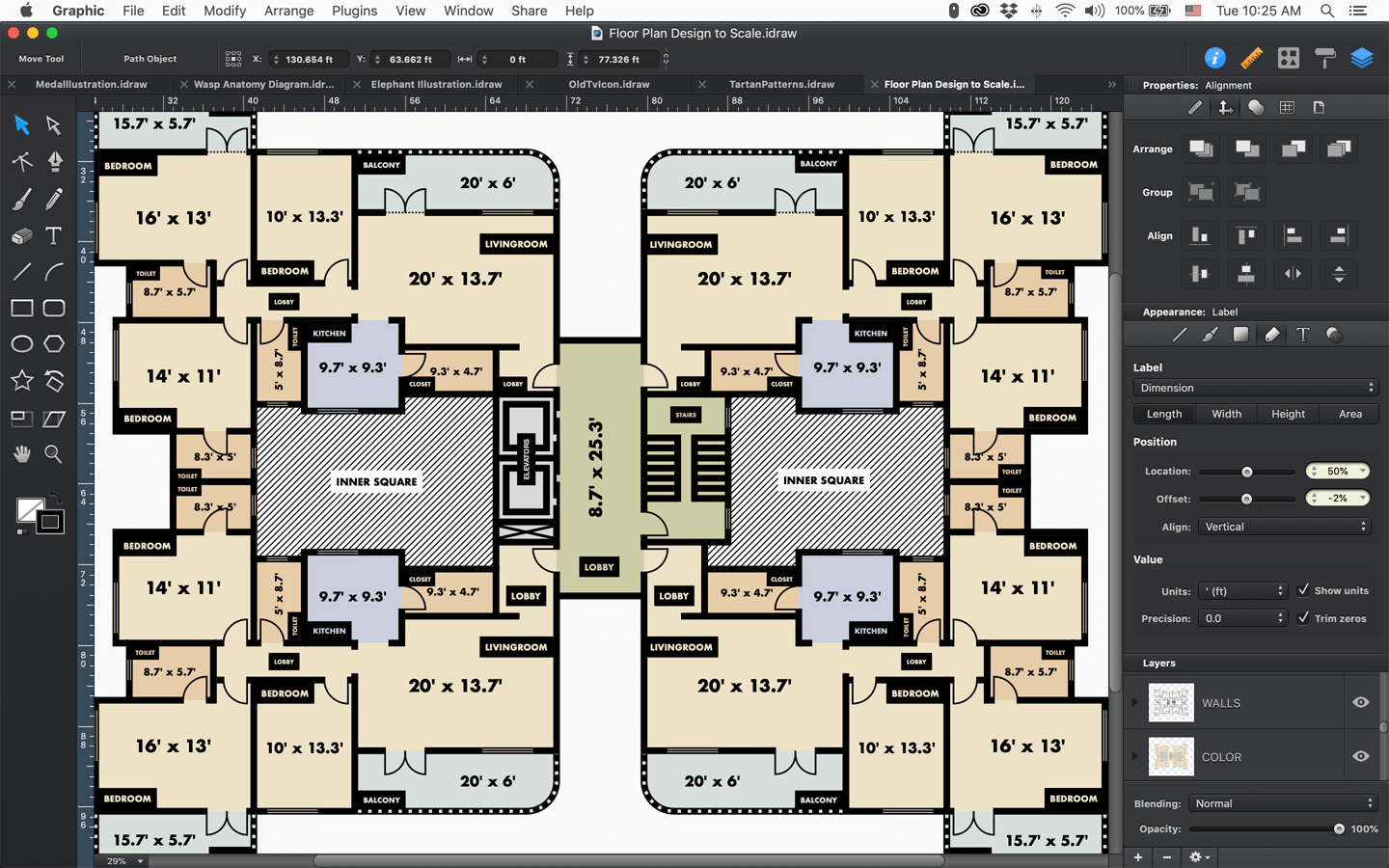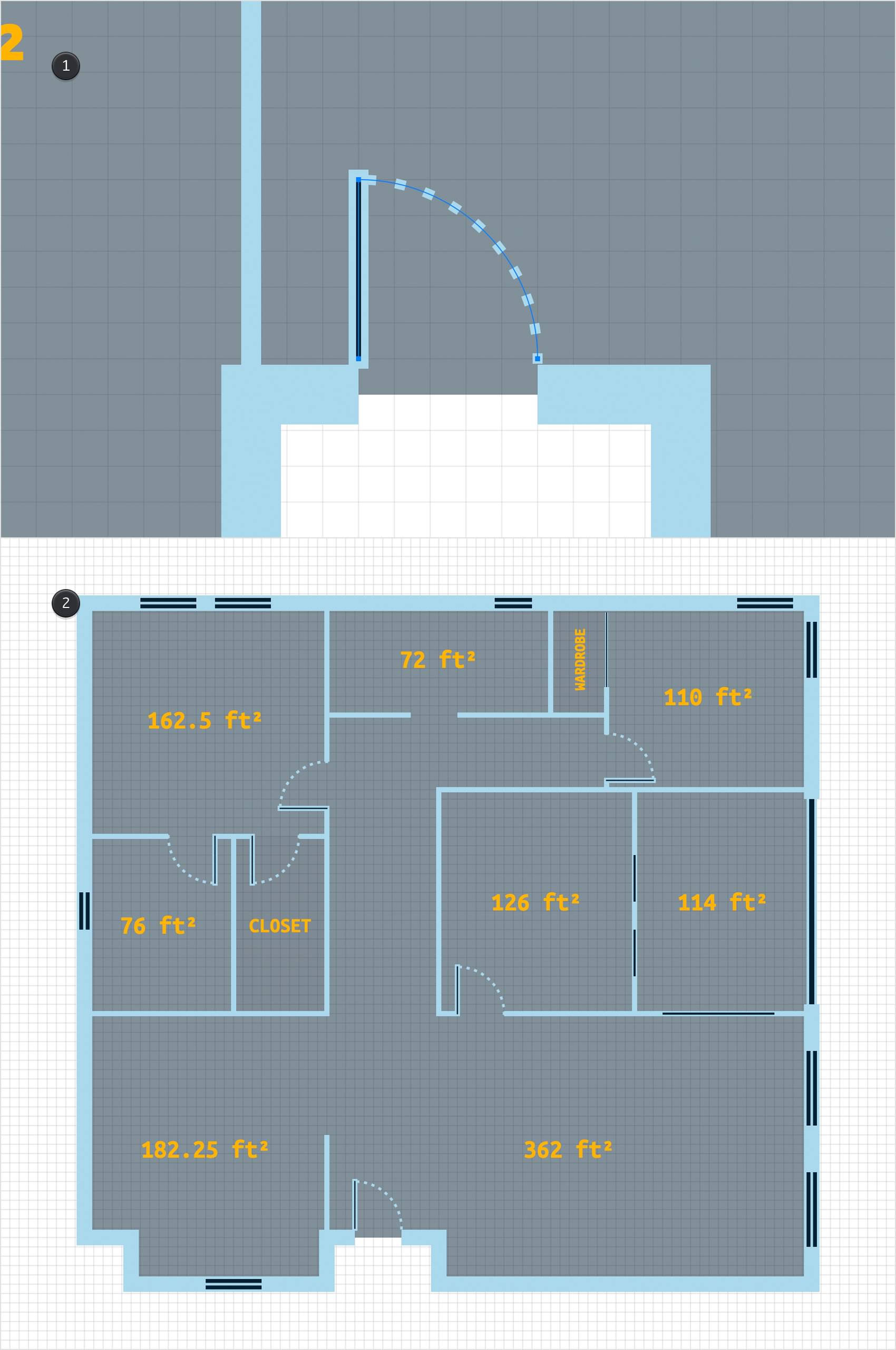

Make the blend of the layer we just painted a multiplier. This is what it looks like when only the shadow is displayed. The next step is to bring it up to color.įill in each piece of furniture with the bucket tool. It’s still feels a bit empty, so I’ll draw in some small items like books and carpets. Try to draw it while keeping in mind that there are two pieces of glass and that they overlap.Īnd if you draw the window into the illustration in the same way, it will look like this.Įrase the unnecessary parts and restore the opacity.
#Mac draw floor plan flash windows#
Windows come in many shapes and sizes, but here is how most of the large windows in a room work. The shape of the window is one of the most complicated parts of the room, so here is a simple explanation of how it works. Then, draw the windows as well, using the width created in the floor plan. Next, we will create walls following the shape of the floor plan.ĭraw a line for depth using the and for height using the. Next we want to create the walls and windows, so let’s put the furniture layers together in a folder and then lower the opacity. We are almost done creating the large piece of furniture. Next, erase the overlapping areas with an eraser.

The houseplants are also drawn to the size created in the floor plan. You can get the shape of the bed right by (1) making the framework, (2) covering it with bedding, and (3) eliminating the overlap.įor the low table, the procedure is the same as for the desk. The desk is drawn by combining a long, thin stick and a flat board. If you draw a line up, down, left, or right through the center, you will get the correct center.įor the sofa, it is easier to use a rectangular shape so that it is not too complicated. Use the straight line tool to connect the four corners of the surface you want to draw to the diagonal.


Next, we want to draw the drawer point, so draw a “X” to measure the center. The diagonally extending lines call for the that we created, and the verticals are made into a three-dimensional rectangle along the. We will start by creating a shelf with a simple shape. The next step is to create the furniture. Next, lower the opacity of the floor plan layer to make it easier to work with. To draw a line using a vanishing point, use the same method as above. This time, create a vanishing point along the green line. Now you have saved the vanishing point ①.Ĭreate and save Vanishing Point ② for the top and bottom edges in the same way. Vanishing point ① will be used for the left and right edges, and vanishing point ② will be used for the top and bottom edges.įirst, decide the vanishing point ① by touching the pink line on the left and right 4 times. This time, we will create two vanishing points. Transform the image as if you were laying it on the ground of the room while pulling it to the bottom half of the screen. Transform the drawing from a floor plan to a three-dimensional illustration of the room.Īnd select at the bottom of the image. Here is a rough idea of what it looks like.įurniture sizes range from pin to pin, but use this as a guide for general furniture sizes. However, the aspect ratio of a room varies greatly from building to building, so the comparison doesn’t have to be exact when making an illustration!Īnother part is that the memory of the grid is easy to use as a guide, so we will continue drawing assuming that 10 squares are 1 meter. Since 3×4 is 12, the aspect ratio is roughly 3m:4m.Īlso, if the room is 8 tatami mats, it is generally a square room. I want to draw a room of about 8 tatami mats, so 1.62 m2 x 8 is 12.96 m2. In this case, we used 1.62 square meters, which is the most basic size. The size of a room is calculated in tatami mats, but even one tatami mat can vary in size. Ĭreate a rectangle in black to match the grid. The next step is to create a room frame for the floor plan. The grid is now displayed on a blank canvas. This time, we will draw a large single room (8 tatami mats).


 0 kommentar(er)
0 kommentar(er)
